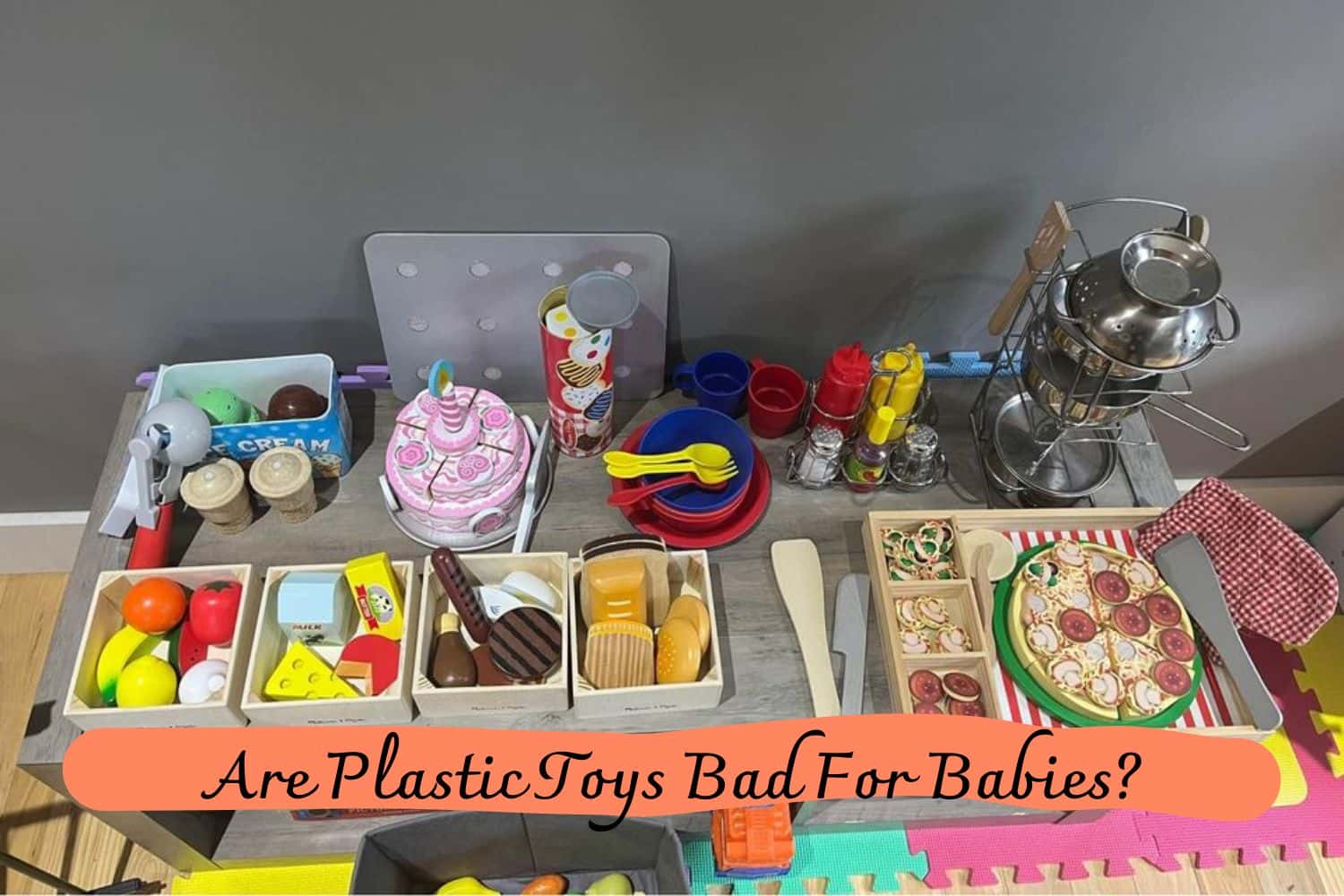Are plastic toys bad for babies? Find out what experts say and learn more about how to make the best decisions for your child’s development.
Are Plastic Toys Bad For Babies?
As parents, we all want the best for our children. So when it comes to buying toys for them, we are always looking for something that is both safe and fun.
But lately, questions have been raised about: Are Plastic Toys Bad For Babies?
Some worry that these types of playthings might be hazardous to a child’s health and development, while others insist they’re perfectly fine.
To find out which side is right, let’s take a look at the evidence surrounding plastic toys and their effects on babies.
In this blog post, we’ll explore what research has shown about the potential risks involved with playing with plastic toys as well as some tips on making sure your little one stays safe while having fun!
The Hazards of Plastic Toys: Exploring the Composition and Risks Involved
Discovering the composition of plastic toys is a crucial aspect of ensuring child safety. PVC plastics, containing a combination of chemicals, are primarily responsible for the potential dangers associated with these toys. Moreover, the risks are exacerbated by how these toys are used, particularly if they are exposed to a child’s mouth.
It is important to note that PVC, the most toxic form of plastic, is present in almost every soft plastic toy. Alarming as it may sound, this harmful material is also found in essential infant items such as teething rings, bath toys, and squeeze toys. The potential danger lies in the ability of these toxins to leach out, making it especially concerning when babies or children place these toys in their mouths.
Ensuring the safety of children involves understanding the materials used in their toys and the inherent risks associated with them. By equipping ourselves with this knowledge, we can work towards a safer environment for our little ones.
Are Plastic Toys Bad For Babies?
As parents search for safe and enjoyable toys for their children, plastic toys seem to be the perfect fit. However, these seemingly harmless toys contain toxic chemicals that can easily seep out, particularly when babies put them in their mouths.
The toy industry utilizes various types of plastics, with Polyvinyl Chloride (PVC) being one of the most common and hazardous. Despite its popularity among toy manufacturers due to its soft and flexible nature, PVC is found in numerous soft toys like teething rings and bath toys.
With proper precautions, plastic toys are generally safe for babies and children to play with.
When purchasing plastic toys, always make sure they are certified non-toxic and free from PVC plastics. Research the product’s ingredients if possible to ensure it meets safety standards before buying it.
It is also important to inspect the toy for cracks, chips, or other signs of damage. Any item that shows visible wear and tear should be discarded immediately as it could pose a choking hazard.
Finally, never allow babies to put plastic toys in their mouths as this increases exposure to potential toxins. It is essential to supervise your little one while they are playing with these items and keep an eye out for any signs of irritation or discomfort.
The Dangerous Effects of Toxic Chemicals in PVC
Phthalates – Delightfully squishy yet dangerous, phthalates found in plastic toys can disrupt hormones, leading to early puberty and fertility issues. They are also implicated in liver lesions, allergies like asthma, and increased cancer risks.
Cadmium – A plastic stabilizer and a known carcinogen, cadmium is linked to slow brain development, kidney damage, and bone complications.
Organotin – Another perilous stabilizer, organotin wreaks havoc on the gastrointestinal, respiratory, and neurological systems. It can also trigger skin and liver issues.
Lead – Used to enhance flexibility and withstand heat in plastic toys, lead negatively affects the central nervous system and has been associated with ADHD, low IQ, and stunted growth.
Bisphenol A (BPA) – While making toys lighter, heat-resistant, strong, and durable, BPA can interfere with brain development and alter child behavior. In infants and young children, it may impact the development of prostate glands.
Flame Retardants – Employed to minimize fire risks in plastics, flame retardants have been linked to reproductive problems, abnormal child development, disruptions in the thyroid and endocrine system, as well as certain types of cancers.
Formaldehyde – As a preservative in water-based toys, formaldehyde is a confirmed carcinogen.
Conclusion
In conclusion, while plastic toys do come with some safety risks that parents have to be aware of, several benefits come with offering plastic toys to babies.
Ultimately the decision is up to the parents and their comfort levels when it comes to what type of toys are safe for their baby. We recommend researching recommendations and ensuring that any toys you purchase meet safety regulations, as well as providing ample supervision when playing.
Plastic toys can open up a world of imaginative and creative play for your little one. So let yourself decide if the risk is worth it to give your child the opportunity to explore their world and find joy through playtime. Kids only get one childhood—make sure yours enjoys every part of it while staying safe!
Thanks for reading our article Are Plastic Toys Bad For Babies? If you want to know more information, visit our website here.
Read more:

